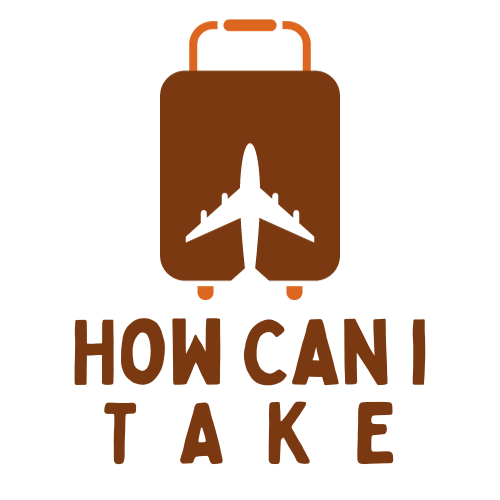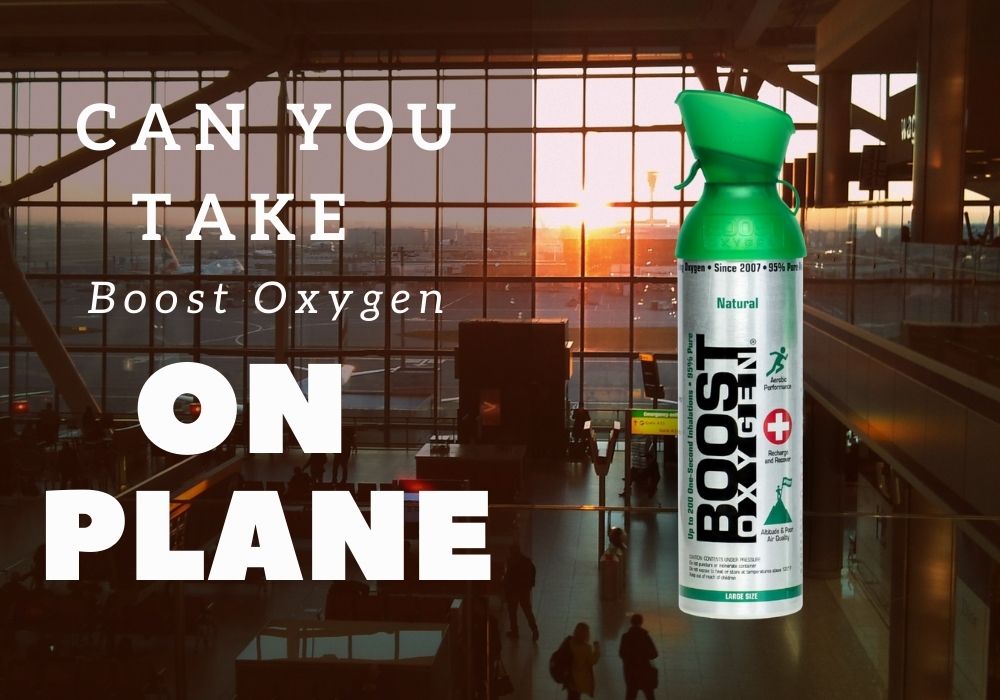Are you planning to travel by air with Boost Oxygen? Whether you’re traveling for leisure or medical reasons, it’s essential to understand the importance of supplemental oxygen during air travel. In this blog Can You Take Boost Oxygen on a Plane? we’ll cover everything you need to know about carrying Boost Oxygen while flying. From understanding who requires supplemental oxygen to TSA guidelines and compliance regulations, we’ve got you covered.
We’ll also provide a checklist of preparation steps before boarding your flight with Boost Oxygen and answer the question on everyone’s mind- can you travel internationally with Boost Oxygen? Keep reading to learn all about flying with Boost Oxygen and make your air travel experience smoother and safer.
Table of Contents
Understanding the Need for Boost Oxygen While Flying

Boost oxygen is a valuable companion for air travel, particularly for individuals with lung diseases and those affected by changes in cabin pressure.
With its portable canisters, boost oxygen provides a convenient solution to maintain oxygen levels during flights. It effectively alleviates altitude-related symptoms and promotes overall health, especially during high-altitude journeys.
By combatting the effects of air pressure on the body, boost oxygen ensures a comfortable and safe flight experience. Its range of sizes and aromatic essences, like pink grapefruit, cater to different needs and enhance the journey’s various facets.
Importance of Supplemental Oxygen in Air Travel
Supplemental oxygen plays a crucial role in air travel, particularly at high altitudes. By preventing the adverse effects of altitude on the body, it ensures a safer and more comfortable journey. Boost oxygen canisters are specifically designed to boost oxygen flow, promoting better oxygenation throughout the body. This helps improve oxygen levels and reduces the risk of health complications during flights.
For individuals with medical conditions, such as lung disease, the use of boost oxygen canisters can be a life-saving tool, allowing them to travel by air safely. By enhancing overall oxygen levels, supplemental oxygen enhances the travel experience, enabling individuals to enjoy different facets of their life while preserving the health of their body.
Who Requires Boost Oxygen?
Boost Oxygen is beneficial for various individuals during air travel. Those with lung disease, including chronic obstructive pulmonary disease (COPD), can find relief by using boost oxygen canisters on flights. Boost oxygen is also suitable for people who require supplemental oxygen due to medical conditions. Additionally, it helps alleviate symptoms of altitude sickness and can be used by anyone looking to enhance their oxygen levels while flying.
Can You Take Boost Oxygen on a Plane?More specific

TSA Guidelines for Carrying Boost Oxygen
When traveling with boost oxygen on commercial airlines, it is essential to familiarize yourself with the TSA guidelines to ensure a smooth journey. First, make sure your boost oxygen canisters comply with the TSA requirements for air travel, including the weight restrictions. Calculate the number of canisters you need based on the duration of your flight and consult your healthcare provider for the appropriate flow rate.
By following these guidelines, you can safely carry boost oxygen on your flight and enjoy the benefits of enhanced oxygen levels without any hassle.
Rules and Restrictions for Carrying Oxygen on Flights
Boost oxygen canisters, when carried on a plane, must adhere to the acceptance criteria set by the FAA and air carriers. The good news is that domestic flights within the United States allow passengers to bring boost oxygen canisters onboard. These canisters are not considered hazardous materials, making them permissible for air travel.
However, it’s essential to ensure you have enough batteries to power your portable oxygen concentrator throughout the duration of your flight. Remember, boost oxygen canisters can be brought on board aircraft as a medical necessity, but they are subject to TSA regulations.
Ensuring Compliance with TSA Regulations
To ensure compliance with TSA regulations when flying with boost oxygen canisters, there are a few important steps to follow. First, pack your boost oxygen canisters in your carry-on baggage according to TSA guidelines. It’s crucial to make sure they are easily accessible for inspection at the security checkpoint.
During the screening process, be sure to notify the TSA officers that you have boost oxygen canisters. It’s also recommended to carry a medical certificate or a letter from your health care provider stating the medical necessity of the canisters.
Lastly, familiarize yourself with the various rules and requirements set by the TSA regarding boost oxygen canisters.
Preparation Steps for Flying with Boost Oxygen
Before boarding a flight with Boost Oxygen, it’s important to take a few preparation steps. First, create a checklist of essential items, including your Boost Oxygen canisters. Make sure you have enough canisters to last the duration of your trip, considering both the flight time and any layovers. Additionally, check the weight of a full Boost Oxygen canister to determine if carrying multiple canisters is advantageous.
Familiarize yourself with the FAA requirements regarding the phases of flight where Boost Oxygen can be used. Lastly, consider the length of your trip, the altitude at your destination, and your health conditions when packing your Boost Oxygen canisters.
Checklist Before Boarding
Before boarding your flight, make sure to check the boost oxygen canisters you’re carrying. Confirm that they have a discernible mass, indicating they are full and ready for travel. Pack the boost oxygen canisters securely to protect them from any damage during the flight.
Additionally, ensure you have extra batteries for your portable oxygen concentrator, enough to last the entire duration of your flight. Double-check the acceptance criteria of boost oxygen canisters on your specific air carrier, as requirements may vary.
Lastly, consult your health care provider for any specific instructions or health-related concerns regarding the use of boost oxygen canisters on flights.
Can You Travel Internationally with Boost Oxygen?
When traveling internationally with boost oxygen, it is essential to check the rules and regulations of your destination regarding canister acceptance. Ensure compliance with international aviation standards and familiarize yourself with customs, security, and health regulations. Consider the weight restrictions imposed by international airlines. Also, check the availability of boost oxygen at your international destination for refills.
Frequently Asked Questions
Can you fly with supplemental oxygen?
Yes, it is possible to fly with supplemental oxygen. However, you need to inform the airline in advance and provide documentation from your doctor. The oxygen must be supplied by the airline or an approved oxygen supplier, and there may be additional fees involved for its use during the flight.
Is Boost Oxygen aviation grade?
Boost Oxygen is indeed aviation grade, meeting the guidelines set by the Federal Aviation Administration (FAA) for medical oxygen. It is safe to use during air travel to combat altitude sickness and fatigue. However, it’s important to check with your airline as they may have their own restrictions.
Is Air Travel with Oxygen Safe?
Air travel with oxygen can be safe for individuals with specific medical conditions. Boost Oxygen offers a convenient and portable solution for those needing supplemental oxygen during flights. Consult your doctor and obtain necessary documentation before flying with oxygen. TSA guidelines include notifying the airline and properly labeling oxygen equipment.
What Airlines Allow Oxygen Tanks?
Many airlines permit passengers to bring portable oxygen concentrators on board, while some require advance notice and documentation for those traveling with oxygen tanks. Airlines like Delta, United, and American allow small compressed oxygen cylinders. Always check your airline’s guidelines before traveling with oxygen tanks.
Why does flying tire you out so much?
Flying can leave you feeling exhausted due to a combination of factors. The different pressurization in the cabin, dry air, and dehydration can contribute to discomfort and fatigue. Additionally, long flights, jet lag, and lack of sleep can further contribute to feeling tired after flying.
Conclusion and final thoughts
When it comes to flying with Boost Oxygen, it is important to understand the need for supplemental oxygen during air travel. Boost Oxygen provides a convenient and effective solution for individuals who require oxygen support while flying.
However, it is essential to comply with TSA guidelines and regulations when carrying Boost Oxygen on flights. Familiarize yourself with the rules and restrictions for carrying oxygen and ensure that you are well-prepared before boarding.
While Boost Oxygen is permitted on domestic flights, it is essential to check the regulations for international travel. By following these guidelines and taking the necessary steps, you can have a safe and hassle-free experience while flying with Boost Oxygen.





Leave a Reply